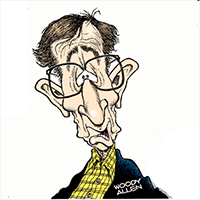Patricia Lopez: Minnesota is about to give a crash course in bipartisanship
Published in Op Eds
Minnesota is about to embark on an intense, high-stakes experiment in forced bipartisanship. The North Star state could show a way forward for a closely divided U.S. Congress — if politicians in D.C. are paying attention.
Minnesota came out of the 2024 election with a statehouse that slid from solid Democratic control to one divided improbably between 67 Democrats and 67 Republicans. Democrats retained their one-vote majority in the state senate. Democratic Governor Tim Walz returns from his short-lived run as a vice presidential nominee to govern a more polarized state with a far more emboldened GOP.
The Democrats’ 2022 trifecta — the unexpected result of a blue wave at the midterms — will be replaced by a uniquely hard-to-govern “tie-fecta.”
In such a scenario, the smallest detail becomes an awkward negotiation. The house will be governed by not one but two speakers — one Republican and one Democrat. Committee assignments, chairs, rules and agendas will all require a delicate dance by antagonists dedicated to one another’s defeat.
Bipartisanship is a muscle many state legislators are unaccustomed to flexing. The 2024 elections delivered 38 statehouse trifectas. An astonishing 82% of people now live in states governed largely by a single party.
That phenomenon — and its disadvantages — was explored in a deep dive by my Bloomberg Opinion colleagues Mary Ellen Klas and Carolyn Silverman, who found the one-party dynamic suppresses competitive elections, discourages voter engagement and too often enables the ruling party to ignore voters outside their base.
But of course, it can also make for some speedy legislating. Democrats in Minnesota took full advantage of their unity after 2022, ramming through a transformative agenda that reflected years of pent-up progressive demand.
A partial list includes paid family and medical leave, expanding state-subsidized health insurance to more families on a sliding scale and to undocumented immigrants, free breakfast and lunch in public schools, shield laws for transgender youth traveling to Minnesota for gender-affirming care, increased child tax credits and some of the strongest protections in the country for abortion rights.
Compromises that might have given opponents a stake in Democratic bills were often passed over, lest the proposals get watered down. That made for great bragging rights on the campaign trail, but may also have triggered anger among some voters.
Now comes the aftermath: a statehouse where no one is in control.
“It’s essentially a circular firing squad,” said former Democratic Majority Leader Ryan Winkler, who left the legislature in January 2023. “The only way it proceeds now is if everyone keeps their guns down and proceeds together.”
One possible outcome is that Minnesota Republicans will demand some degree of retreat from the Democrats’ progressive victories. That may be the inevitable downside of proposals crafted by one party alone.
Such reversals have become familiar in Washington, DC. President Joe Biden spent the first week of his term issuing dozens of executive orders and memoranda on a broad range of issues whose common theme was undoing much of what his predecessor had done. Now that President-elect Donald Trump is about to start a second term, he is expected to return the favor, nullifying what he can of Biden’s legacy.
This kind of whipsawing generates a tremendous amount of uncertainty.
It’s infinitely harder for two sides to work out an enduring compromise that takes the best ideas from both. (And yes, both sides occasionally have good ideas.) But it does produce better outcomes — and more long-term stability.
Craig Volden, professor of public policy and politics at the University of Virginia’s Frank Batten School of Leadership and Public Policy, noted recently that all-or-nothing policy proposals have a poor track record. He cited a study from the University of Chicago that examined bipartisanship in Congress from 1973 to 2016. It found that “bipartisanship unambiguously helps individual lawmakers who seek to advance their policy goals.” Bills with broader support are more likely to be enacted.
“Lawmakers who recognize this and do the hard work to form broader coalitions,” Volden said, “have been finding much greater success. They offer a blueprint for constructive lawmaking that forms the bedrock of a healthy democracy.”
So, what lessons can Minnesota offer? Can such bipartisanship be forced?
It’s possible. Minnesota is fortunate to have two low-key, hard-working women leading their respective parties in the house. Democrat Melissa Hortman and Republican Lisa Demuth, the speaker-designates, are respected within their caucuses, even-handed in their treatment of others, and not given to grandstanding. Beyond that, it’s possible to create rules that encourage working together, such as requiring bills to have a certain percentage of bipartisan committee votes before advancing.
Then there are the lessons from the election itself.
Republicans in the state, and nationwide, find themselves with a coalition that, for now, includes far more of the working class and minorities than before. In theory, that should make them more receptive to priorities in those communities. Democrats may have tested the limits of certain progressive causes and may need to reframe or scale back to broaden their party’s appeal.
It's hard — even impossible — to envision Trump’s second term ushering in a new era of bipartisanship. But the GOP has slim margins in both the House and Senate and even a handful of moderate Republicans could check Trump’s most extreme ideas.
If Republicans want Trump’s coalition to outlast Trump, they’ll listen to those moderate voices — and keep an eye on Minnesota.
_____
This column does not necessarily reflect the opinion of the editorial board or Bloomberg LP and its owners.
Patricia Lopez is a Bloomberg Opinion columnist covering politics and policy. She is a former member of the editorial board at the Minneapolis Star Tribune, where she also worked as a senior political editor and reporter.
_____
©2024 Bloomberg L.P. Visit bloomberg.com/opinion. Distributed by Tribune Content Agency, LLC.



























































Comments